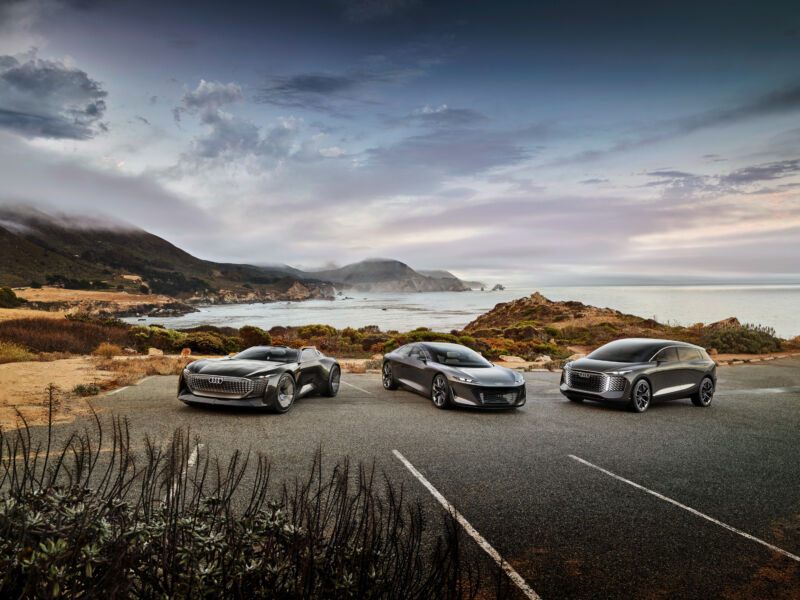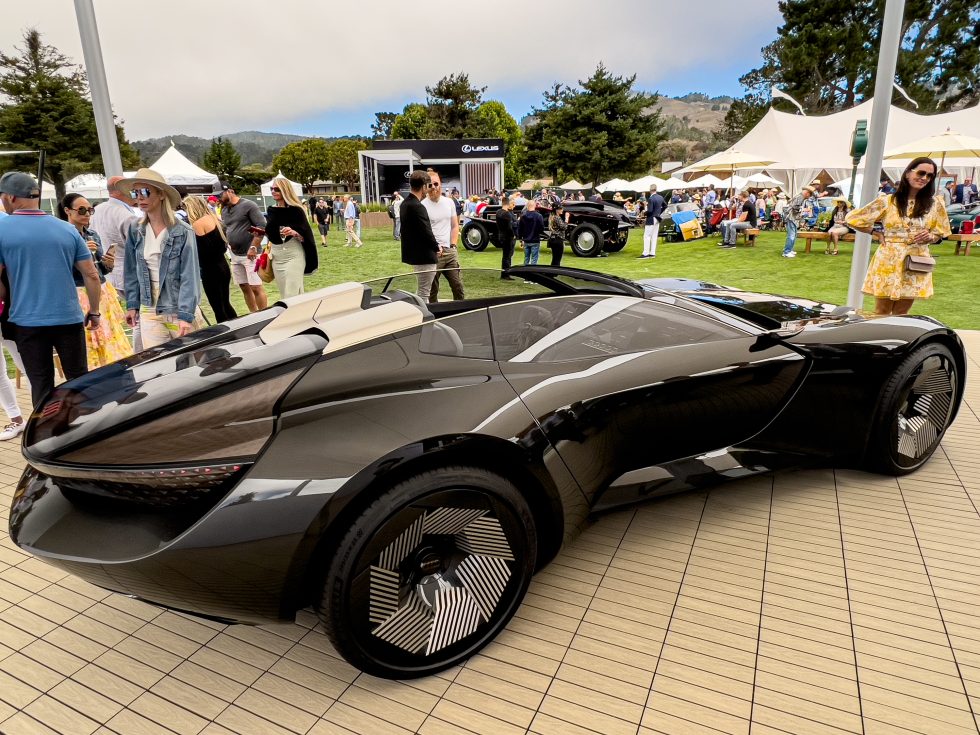
Enlarge / From left to right, the Skysphere, the Grandsphere, and the Urbansphere concept cars. (credit: Audi)
MONTEREY, CALIF.—Freed from the strictures of road legality legislation, it's obvious what car designers get from making concept cars. But car designers don't run car companies, and in a business with such tight margins, there has to be a financial imperative to bother creating a car that may never see production.
Which there is. Running the gamut from next year's model in a slight disguise all the way through to "none of this exists yet but wouldn't it be cool" flights of fancy, concepts serve as a way to gauge the general public's tastes when it comes to something new. At this year's Quail at Monterey Car Week, I spoke with Filip Brabec, Audi of America's SVP of product management, to get the suits' perspective on concept cars.

The Skysphere's wheelbase grows by 250 mm when it switches into autonomous mode. (credit: Jonathan Gitlin)
Specifically, I wanted to know what the process looks like from the practical side of the business. For example, does the design team arrive with a new concept as a fait accompli? As it turns out, that's not at all how it works.
No comments:
Post a Comment